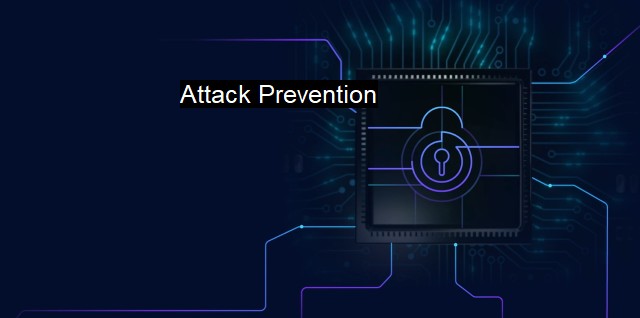What is Attack Prevention?
The Crucial Role of Attack Prevention in Cybersecurity and Antivirus: Safeguarding Systems from Unwanted Intrusion and Malware Attacks
Attack prevention, fundamentally seen as the technique used to preemptively stop or hinder cyber threats on a computing system, is a crucial part of cybersecurity frameworks and antivirus solutions. This process plays a significant role in securing machines, networks, data, or personal information from a wide variety of cyber-attacks, especially in today's digital landscape with an ever-increasing generation and utilization of data and network technologies.Attack prevention consists of a wide range of practices, applications, and tools aiming to strengthen a network system or a computer against possible attacks. Some common aspects of attack prevention in cybersecurity context include firewalls, antiviruses, spyware removal tools, password managing tools, encryption, user authentication, and others. These tools are essential elements in safeguarding the integrity, confidentiality and availability of data and network services; preventing unauthorized access, use, disclosure, disruption, modification, inspection, recording or destruction of information.
Firewalls, internal or external, are the first line of defense that segregate internal systems from outside networks, such as the Internet, scrutinizing inbound and outbound traffic based on predefined security regulations. Firewalls deter cyber-attacks by blocking unauthorized access and shutting down ports which are potential doorways for intrusions.
Antivirus software performs an essential function by scanning, detecting and eliminating malicious codes. It prevents, detects, and removes malware, viruses, spyware, and adware that can breach security and impair system functionality. Modern antivirus software is adept at identifying and countering a wide array of threats, including phishing attacks, ransomware, and Trojan horses, among others.
Anti-spyware tools, by detecting, preventing and eliminating spyware, shield a system from the theft of user personal or financial information. These are essential in thwarting identity thefts or illicit tampering of systems.
For ensuring the authenticity of users and limiting resources to authorized personals only, processes like two-factor authentication and biometric verification accurately secure user access points. Similarly, encryption tools can be employed to protect sensitive data cryptographically and prevent unauthorized disclosure of information during transfer.
Another notable measure used in attack prevention strategies is the implementation of Intrusion Prevention Systems (IPS). These systems carefully monitor network traffic to identify potentially harmful activities and react immediately by alerting the administrator, dropping packets related to this activity or resetting the connection.
Regular security audits and monitoring activities are part and parcel of an effective attack prevention protocol that helps identify vulnerabilities and weaknesses within a particular system or network. This includes regularly updating software and hardware to protect against newly developed threats, setting automatic updates on systems and applications, implementing patches on identified vulnerabilities, or replacing outdated mechanisms prone to exploitation.
Lastly, not all cybersecurity attacks are technical; some, like social engineering attacks, are psychological maneuvers that aim to trick people into divulging confidential information. Through an attack prevention perspective, mitigation of these attacks can be as simple as instilling knowledge to users about recognizing and reacting to such psychological attacks. This includes timely training and making employees aware of such tactics and the importance of saving and using information responsibly.
Attack prevention in cybersecurity offers a vital mechanism in the continuous fight against an array of cyber threats. It proactively identifies, assesses, and counters potential threats to maintain the safety of data and system environments. Regular updates and continuous scanning of potential exposure areas strengthen these layers of defense embedded within the networks or systems, providing a cyber-ecosystem where data integrity and confidentiality are preserved.

Attack Prevention FAQs
What is attack prevention?
Attack prevention is the process of implementing measures to prevent potential cyber attacks on a system or network. It involves identifying vulnerabilities, assessing the risks, and implementing countermeasures to reduce the likelihood and impact of an attack.How does antivirus software help with attack prevention?
Antivirus software is designed to detect, prevent, and remove malicious software or malware from your device or network. It works by scanning files and programs for known signatures or behaviors of malware, and then blocking or quarantining any suspicious files. By regularly updating your antivirus software, you can reduce the risks of a successful cyber attack.What are some common attack prevention techniques?
Some common attack prevention techniques include using strong passwords, regularly updating software and system patches, implementing firewalls, conducting security audits, and providing cybersecurity training to employees. These techniques can help reduce vulnerabilities and provide layers of defense against potential cyber attacks.Why is attack prevention important for businesses?
Attack prevention is crucial for businesses as they often store sensitive data and customer information that can be targeted by cybercriminals. A successful cyber attack can have serious consequences such as loss of reputation, customer trust, and financial losses. Implementing effective attack prevention measures can help businesses to safeguard their systems and data, and mitigate the risks of a cyber attack.| | A | | | B | | | C | | | D | | | E | | | F | | | G | | | H | | | I | | | J | | | K | | | L | | | M | |
| | N | | | O | | | P | | | Q | | | R | | | S | | | T | | | U | | | V | | | W | | | X | | | Y | | | Z | |
| | 1 | | | 2 | | | 3 | | | 4 | | | 7 | | | 8 | | |||||||